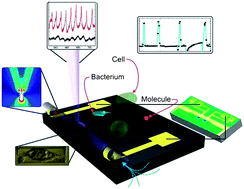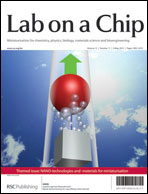Lab-in-a-tube: ultracompact components for on-chip capture and detection of individual micro-/nanoorganisms†‡
Abstract
A review of present and future on-chip rolled-up devices, which can be used to develop lab-in-a-tube total analysis systems, is presented. Lab-in-a-tube is the integration of numerous rolled-up components into a single device constituting a microsystem of hundreds/thousands of independent units on a chip, each individually capable of sorting, detecting and analyzing singular organisms. Such a system allows for a scale-down of biosensing systems, while at the same time increasing the data collection through a large, smart array of individual biosensors. A close look at these ultracompact components which have been developed over the past decade is given. Methods for the capture of biomaterial are laid out and progress of cell culturing in three-dimensional scaffolding is detailed. Rolled-up optical sensors based on photoluminescence, optomechanics, optofluidics and metamaterials are presented. Magnetic sensors are introduced as well as electrical components including heating, energy storage and resistor devices.

- This article is part of the themed collection: NANO-technologies & -materials for miniaturisation

 Please wait while we load your content...
Please wait while we load your content...